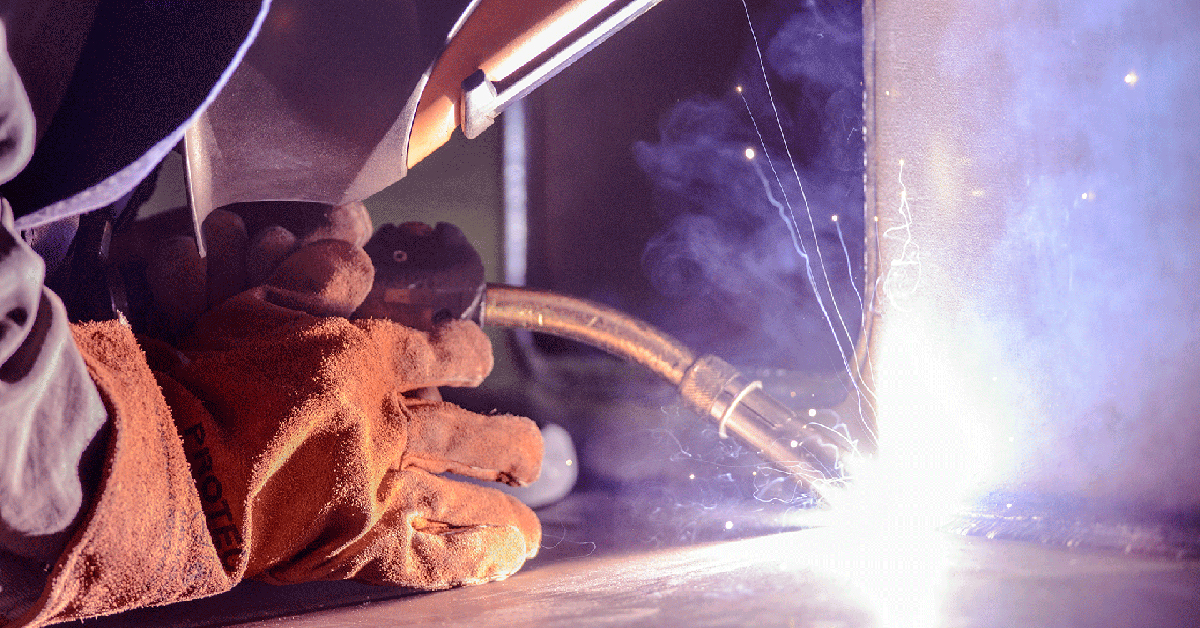Complete Guide to Preventing Weld Undercut: Tips and Techniques
Complete Guide to Preventing Weld Undercut: Tips and Techniques
Blog Article
Understanding the Causes and Solutions for Undercut Welding in Metal Fabrication Processes
In the world of steel manufacture procedures, the event of undercut welding poses a significant difficulty that demands a detailed understanding of its causes and sensible options. The detailed interplay of different factors throughout welding operations can cause this undesirable sensation, affecting the structural honesty and overall top quality of the bonded joints - Preventing weld undercut. By studying the source of undercut welding and discovering reliable restorative procedures, makers can boost the requirement of their craftsmanship and guarantee the production of flawless steel elements
Usual Sources Of Undercut Welding
Often neglected in metal manufacture, undercut welding happens because of various variables that require precise attention and know-how to be successfully reduced. One common reason of undercut welding is extreme warmth input. When the warm input is as well high, it can lead to the melting and succeeding erosion of the base product along the edges of the weld joint, creating a groove or undercut. Furthermore, improper welding strategies, such as utilizing the incorrect welding angle or take a trip speed, can likewise add to undercut development. Insufficient shielding gas protection is another vital element that can cause undercutting. Not enough gas protection falls short to safeguard the weld swimming pool sufficiently, leading to oxidation and undercut flaws. Furthermore, the option of welding parameters, such as voltage, present, and cord feed rate, plays a considerable function in the occurrence of undercut welding. Recognizing these common causes is critical for implementing safety nets and guaranteeing high-grade welds in steel fabrication processes.
Influence of Incorrect Welding Parameters
Imprecise welding criteria can significantly compromise the stability and high quality of welded joints in metal construction procedures. The effect of inaccurate welding specifications materializes in different methods, leading to architectural weaknesses and problems in the bonded components. Meticulous attention to welding criteria is paramount to ensure the manufacturing of high-quality welds with the wanted mechanical properties and structural integrity.
Result of Improper Lantern Angle
Inappropriate torch angle in welding operations can significantly influence the top quality and stability of the final weld joints in metal fabrication procedures. The torch angle plays an important function in identifying the heat input and circulation during welding. When the torch angle is incorrect, concerns such as undercutting can arise. Damaging is a typical welding defect where a groove creates along the weld toe, deteriorating the joint and compromising its architectural integrity.
A torch angle that is also steep can cause insufficient penetration, insufficient fusion, and boosted spatter. On the various other hand, a lantern angle that is too shallow can cause excessive penetration, burn-through, and distortion of the base material. Preventing weld undercut. Correct lantern angle is vital for making certain consistent weld top quality, strength, and appearance
To stop damaging and various other defects triggered by incorrect lantern angles, welders have to be trained to preserve the proper lantern angle throughout the welding procedure. Regular monitoring and modification of torch angles during welding can assist attain audio welds with minimal issues.
Role of Inadequate Welding Methods

One more element of insufficient welding methods is inappropriate weld prep go now work. Poor cleansing of the base steels, wrong joint design, or insufficient edge preparation can all contribute to undercut welding. Poor protecting gas protection or utilizing the wrong type of gas can result in insufficient blend and the development of undercut flaws.
To resolve the function of insufficient welding techniques in steel manufacture procedures, it is necessary to supply extensive training for welders. Proper education and learning on welding criteria, joint prep work, and protecting gas selection can aid stop undercut welding and guarantee premium welds in metal manufacture tasks.
Effective Solutions for Undercut Welding
Resolving undercut welding in steel fabrication calls for carrying out effective remedies to improve weld quality and architectural integrity. Among the primary options to deal with undercut is to adjust welding criteria such as voltage, current, and take a trip speed to make sure proper warm input and fusion. By fine-tuning these setups, welders can prevent extreme melting of the base steel and filler material, reducing the probability of undercut formation.
Furthermore, correct joint preparation is critical in avoiding undercut. Making certain clean base metal surface areas devoid of pollutants and making use of the ideal bevel angle can help useful site promote far better weld penetration and minimize the risk of undercut - Preventing weld undercut. Employing appropriate welding methods, such as weaving or oscillating the lantern, can additionally aid in distributing warm equally and loading the weld joint effectively, decreasing the possibility of undercut problems
Moreover, picking the correct welding consumables, including electrodes and filler metals, is vital in alleviating undercut. Making use of materials with appropriate chemical compositions and mechanical properties can contribute to achieving sound welds with marginal undercut. Normal examination and quality control measures should also be implemented to detect and address undercut issues promptly, guaranteeing the overall stability of produced metal components.

Conclusion
In conclusion, recognizing the reasons and options for undercut welding in metal fabrication procedures is essential for view publisher site accomplishing top notch welds. By attending to common causes such as incorrect welding parameters, inappropriate torch angle, and inadequate welding methods, welders can avoid undercutting and make certain solid, resilient welds. It is important to take notice of these variables and carry out effective remedies to enhance the total welding process and last product quality.

Report this page